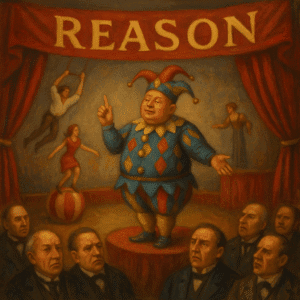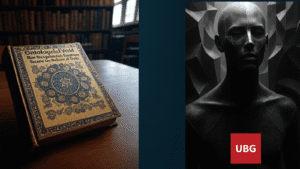Modern Neuroscience: A Multi-Billion-Dollar Tragic Comedy of Ontological Errors

Abstract
Modern neuroscience is a technological triumph and a philosophical misstep. While billions of dollars are invested annually into mapping neural correlates of cognition and consciousness, the field has never resolved—nor consistently defined—the ontological status of its subject. Is the object of study the brain as a physical organ, the mind as an emergent phenomenon, or consciousness as lived subjective experience? By conflating these categories, neuroscience operates within an implicit physicalist framework while presenting its findings as ontologically definitive. This paper argues that the result is a multi-billion-dollar tragic comedy: an institutionally and economically thriving discipline whose foundational question—what is the being of the thing studied?—remains unasked or answered by assumption. Drawing on the philosophy of mind, epistemology, and the sociology of science, I show how this crisis of definition undermines explanatory claims, fosters self-referential research loops, and encourages theoretical overreach masked by technical sophistication. The conclusion calls for a re-engagement with philosophical rigor, warning that without it, neuroscience risks perfecting the measurement of a subject it has never truly identified.
The Ontological Crisis in Neuroscience
At its core, neuroscience has yet to clearly define what it studies. Is “the mind” identical to the brain, or merely correlated? Is consciousness a physical process, an emergent property, or an irreducible aspect of reality? These are not minor definitional debates—they are ontological foundations (Northoff & Smith, 2022). Without resolving them, every claim about “what the brain does” risks ambiguity about whether it is actually describing mind, brain, or experience.
Neuroscience often conflates these categories in practice, operating as if mind = brain without offering philosophical justification for such identity claims (Masi, 2023). This assumption, rooted in physicalism, is not itself a scientific finding—it is a metaphysical position.
Epistemological Loops and the Problem of Verification
The discipline’s epistemic issues are equally deep. Scientific observation is always theory-laden; an fMRI scan doesn’t “show” consciousness—it shows patterns of blood-oxygenation interpreted through a framework that already assumes neural activity is the relevant explanatory domain (Barrett, 2009).
This leads to self-referential research loops:
- Define mental categories using folk-psychological terms (e.g., “attention,” “emotion”).
- Measure neural activity using these categories.
- “Find” correlations that appear to validate the categories.
As McCaffrey et al. (2023) argue, such loops can stall genuine progress by preventing the adoption of more precise, pluralistic cognitive taxonomies.
The Mapping Fallacy and the “Hard Problem”
Mapping neural correlates of consciousness (NCCs) tells us where brain activity aligns with experience, but not why such activity is experience (Chalmers, 1995). As Francken et al. (2022) show, the attempt to align cognitive capacities with neural mechanisms faces three unresolved hurdles: operationalization, abstraction, and boundary-setting. Without overcoming these, NCC research risks becoming a high-tech version of medieval scholasticism—intricate, internally coherent, but disconnected from the ontological reality it claims to address.
Theoretical Overreach and Ontological Assumptions
In recent years, theories like Integrated Information Theory (IIT) and Orchestrated Objective Reduction (Orch-OR) have attempted to bridge the gap. Yet, as Lacalli (2023) notes, these frameworks often embed ontological commitments without acknowledging them. They may claim to “explain” consciousness, but they do so by presupposing what consciousness is, rather than deriving that definition from empirical evidence.
Institutional Incentives and the Economics of Avoidance
The multibillion-dollar ecosystem of neuroscience—comprising grant agencies, industry partnerships, and university labs—rewards technical achievement and media-friendly results far more than slow philosophical clarification. As long as the images are vivid, the funding continues. The result is a field that thrives economically while its most basic question remains not just unanswered, but unasked.
Conclusion
Modern neuroscience is not a failed science—it is a brilliant, partially blinded one. Its technical advances are extraordinary, but its ontological and epistemological foundations are fragile. Until the field confronts what it is actually studying, it will remain a tragic comedy: a massive, sophisticated enterprise perfecting the measurement of something it has yet to define. The call here is simple: before we keep building, let us agree on the ground beneath our feet.
References
Barrett, L. F. (2009). The future of psychology: Connecting mind to brain. Perspectives on Psychological Science, 4(4), 326–339. https://doi.org/10.1111/j.1745-6924.2009.01134.x
Chalmers, D. J. (1995). Facing up to the problem of consciousness. Journal of Consciousness Studies, 2(3), 200–219.
Francken, J. C., Slors, M., & Craver, C. F. (2022). Cognitive ontology and the search for neural mechanisms. Synthese, 200(3). https://doi.org/10.1007/s11229-022-03701-2
Lacalli, T. (2023). Consciousness and its hard problems: Separating the ontological from the evolutionary. Frontiers in Psychology, 14, 1196576. https://doi.org/10.3389/fpsyg.2023.1196576
Masi, M. (2023). An evidence-based critical review of the mind–brain identity theory. Frontiers in Psychology, 14, 1150605. https://doi.org/10.3389/fpsyg.2023.1150605
McCaffrey, J., et al. (2023). Neuroscience and cognitive ontology: A case for pluralism. In National Academies of Sciences, Engineering, and Medicine, Advancing Understanding of the Brain. Washington, DC: National Academies Press. https://doi.org/10.17226/26753
Northoff, G., & Smith, D. (2022). The subjectivity of self and its ontology: From the world–brain relation to the point of view in the world. Frontiers in Psychology, 13, 862146. https://doi.org/10.3389/fpsyg.2022.862146





